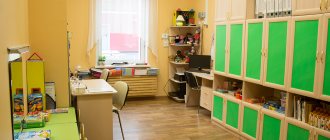Self-education plan for a speech therapist teacher
You can invite the student to select 4-5 unfamiliar words with the sound being studied from a spelling dictionary, remember these words and pronounce them correctly, indicating the location of the sound being practiced. If necessary, the teacher clarifies the meaning of these words.
Only after the child learns to independently distinguish the sound being studied in words (in someone else’s and his own speech), can one move on to developing the ability to isolate sounds from a word, separate them from each other, compare them with each other, determine the role and nature of the connection between sounds in a word .
By training in identifying sounds, a child with phonemic underdevelopment must grasp the common sound of all variants of the same sound in different words. For this purpose, you should select a large number of exercises in which the sound being studied would be in different positions and combinations with other sounds (shower, fur coat, hat, cat, hut)
.
When selecting speech material, it is necessary to ensure that the words presented for sound analysis do not initially contain sounds that are similar in acoustic and articulatory characteristics to the sound being studied. For example, during the period of work on the sound Ш,
words with the sound
С
are not given until the child learns to clearly pronounce, distinguish and isolate the sound being studied from the composition of the word.
If a child experiences difficulties not only in distinguishing sounds, but also in determining their number and sequence in words, then in the beginning, for orientation, you can give him a ready-made visual diagram of the sound composition of these words. Based on the scheme, the child establishes the order of sounds in the analyzed words and at the same time determines what place the studied sound occupies in the words.
As you master the analysis using the scheme, you should move on to isolating sounds by loudly, somewhat exaggeratedly pronouncing them in the words being analyzed, and finally, sound analysis in your mind, to yourself. Since the child often makes mistakes, continuous monitoring of the correctness of the actions he performs on the part of the speech therapist is necessary. Gradually, it becomes possible to move on to more generalized and abbreviated exercises such as: “Name the fourth sound in a word” or “What sound comes before...? what after...? what between...?" etc.
As you can see, here there is a division of the actions of sound analysis into individual elements (operations). The assimilation of each new operation prepares students for the next one, and as a result of practical work, certain phonemic generalizations and observations on the sound side of the language accumulate.
During this period, the split alphabet and all kinds of written exercises are widely used. The child is asked to listen to the word, repeat it and analyze it; after analysis, compose this word from the letters of the split alphabet, read it aloud and write it down in a notebook from memory. You can offer to transform a composed word into another by replacing a letter or several letters (soup - souk - juice
-...); arrange these words one below the other, read, analyze and compare the sound composition of each of them. It is necessary to draw children's attention to the fact that with a change in one sound, the meaning of the word changes.





